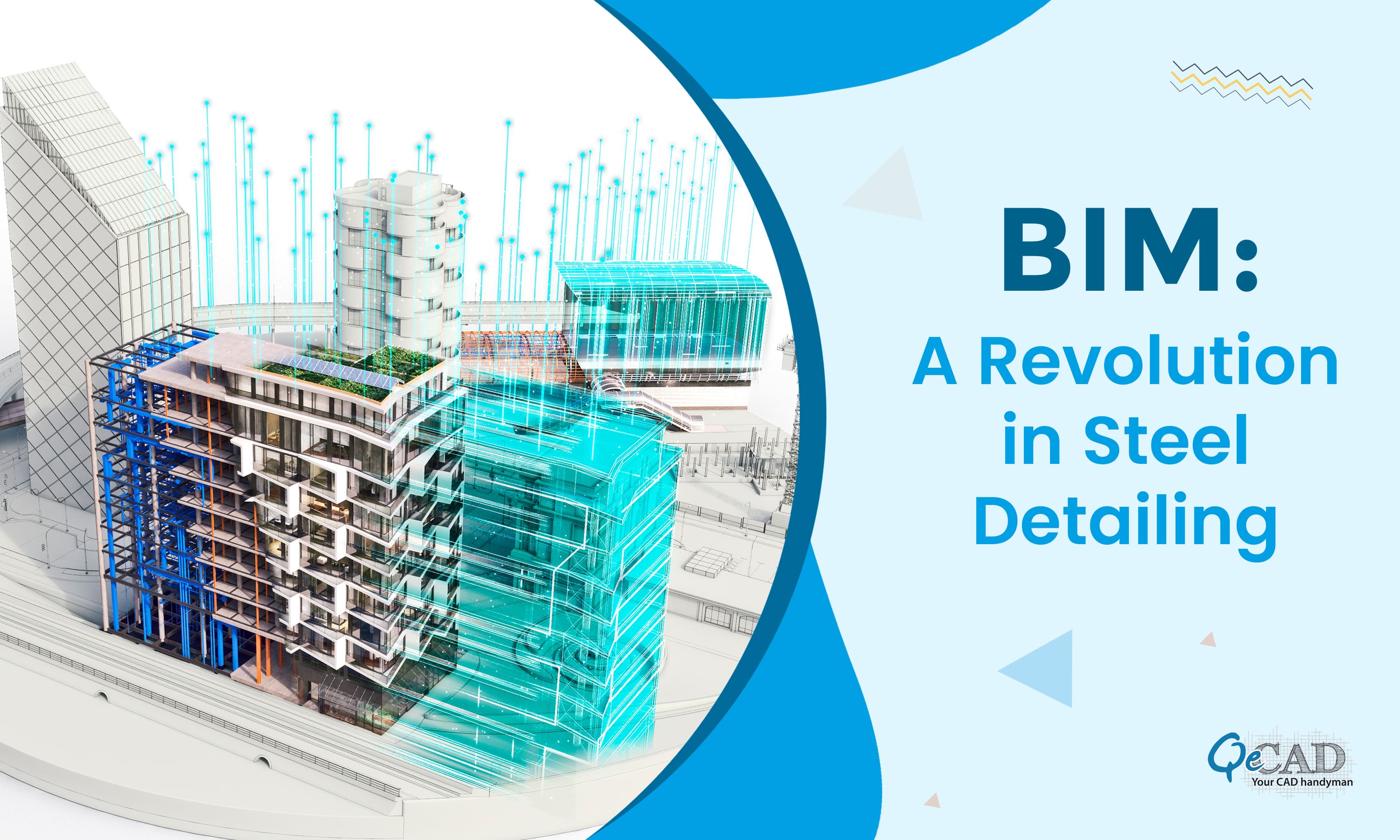
Introduction
Building Information Modelling (BIM) has become a game-changer in the quickly developing area of the building. The planning, designing, and execution of projects are revolutionized by BIM technology, which offers a wide range of advantages throughout the course of the whole construction lifecycle. The present piece investigates the value of BIM for steel detailers, who are essential to the procedure of structural design and construction. We will examine the benefits of Steel Detailing Services and structural BIM services, as well as actual recent figures that demonstrate the influence of BIM in this field.
Understanding Structural BIM Services
The use of BIM technology especially suited for structural engineering and design is referred to as Structural BIM Services. It makes it possible to produce intricate 3D models that include precise details on the steel parts, linkages, and other important structural components. These models may be used by steel detailers to improve collaboration with other building process stakeholders and streamline their own work processes. Although it is still in its early stages, BIM usage among steel detailers is accelerating. In a recent poll by Autodesk, 70% of steel detailers claimed to be utilizing BIM, and it is anticipated that this figure will rise in the years to come.
The market is filled with BIM software solutions, including Autodesk Revit, Bentley Systems’ AECOsim Building Designer, and Nemetschek Allplan. These programs enable steel detailers to produce shop drawings and cutting lists, in addition to 3D models of buildings. To guarantee that BIM models can communicate with one another, a variety of BIM standards are being created. The Industry Foundation Classes (IFC) and the Common Data Environment (CDE) of the Building Smart Alliance are two examples of these international standards.
The Role of Steel Detailing Services
The production of thorough shop drawings and fabrication drawings for steel buildings is a critical part of the construction process. Steel detailers convert the design concept into accurate documentation, giving steel fabricators, erectors, and contractors vital details. This process was formerly carried out manually, which was prone to mistakes and delays. But since the introduction of BIM, steel detailing has seen an amazing change.
The worldwide BIM market is anticipated to develop at a compound annual growth rate (CAGR) of 15.20% from 2017 to 2023, pursuant to an analysis by Market Research Future. This quick development highlights the expanding use and significance of BIM across several sectors, notably construction too.
Benefits of BIM for Steel Detailers
- Improved Visualisation and Clash Detection: Steel detailers may view the steel structure in 3D using BIM, which improves project comprehension. This visual assistance makes it easier to see conflicts, interferences, and confrontations between various construction systems. Early detection and resolution of these problems can reduce the need for costly delays and rework.
- Better Collaboration: BIM makes it easier for project stakeholders to work together seamlessly. Architects, engineers, fabricators, and contractors may all access the 3D models and related data that steel detailers have created. This degree of integration makes sure there is straightforward communication, lessens misconceptions, and improves team member cooperation.
- Effectiveness and precision are Improved: Steel detailers can collaborate on a single, centralized model with BIM, assuring the uniformity and precision of their designs. Throughout the course of a project, automated updates and alterations are possible thanks to BIM’s parametric nature. With this automation, mistakes are greatly decreased, rework is minimized, and overall efficiency is increased.
- Amounts and Cost Estimation: BIM models may produce precise quantity take-offs, assisting steel detailers in more accurate estimation of material amounts and related costs. For the purposes of project planning, budgeting, and purchasing, this information is extremely useful. According to an American Institute of Steel Construction research, BIM can save steel detailing costs by up to 20%.
- Increased safety: BIM models may be used to spot possible safety risks like steel member collisions or insufficient clearances. This might lessen the chance of mishaps and injuries during the building.
- Decreased environmental consequences: BIM models may be utilized in assessing how a project will affect the environment, including how much energy it will consume. Using this knowledge, design choices may be made that are more environmentally friendly.
- Greater client satisfaction: BIM models may be utilized to produce photorealistic representations of structures, which can increase client happiness. This is crucial for projects with intricate steel structures.
Conclusion
The process of steel detailing has been altered by Structural BIM Services, which have given detailers access to strong tools and processes. Steel detailers get a lot from BIM’s benefits, which include greater cooperation, enhanced visualization, higher accuracy, and effective cost estimation. Real-world data from the present day attest to the beneficial effects of BIM on project results, including fewer mistakes, enhanced collaboration, and cost savings. Steel detailers need to employ such technology to be competitive and produce projects of exceptional quality quickly as the building industry keeps on embracing BIM.
